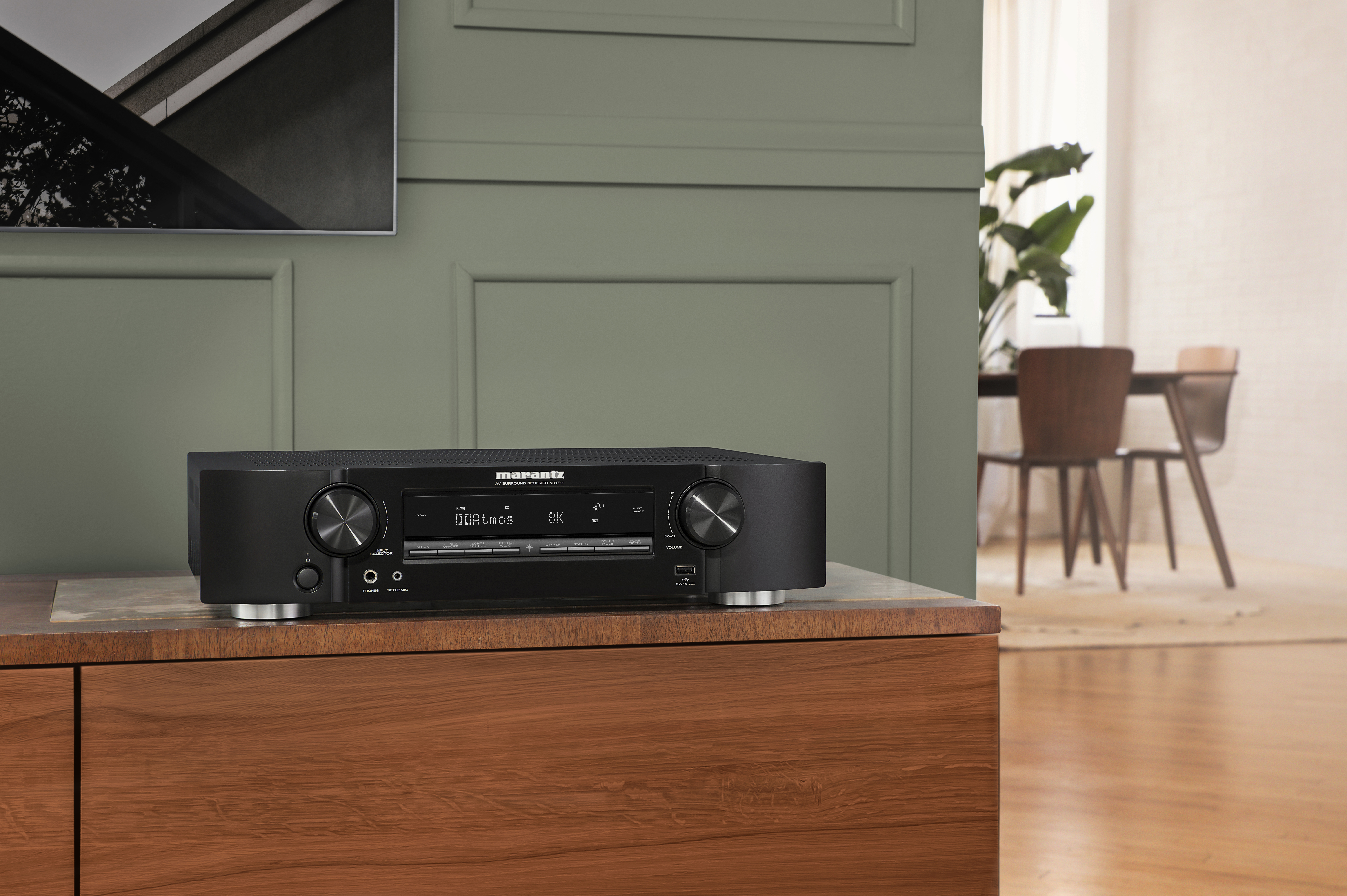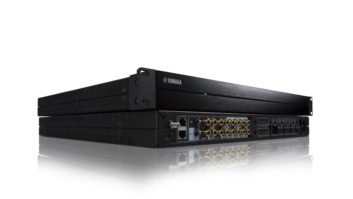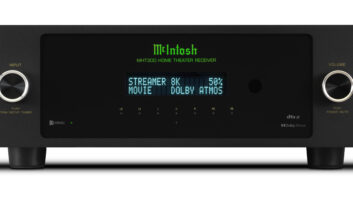The AV receiver (AVR) has always played an integral part in the home theater experience, but today’s models have an even taller order to fill. Not only do they have to support multiple surround formats, including Dolby Atmos, DTS:X, and IMAX Enhanced, they also have to include streaming technologies, UHD video processing, and, in many cases, voice control. Plus, they have to do it while providing ever-more channels and their typical high-end audio components.
Here, we take a look at how some of the more recent entrants into the arena are handling the job.
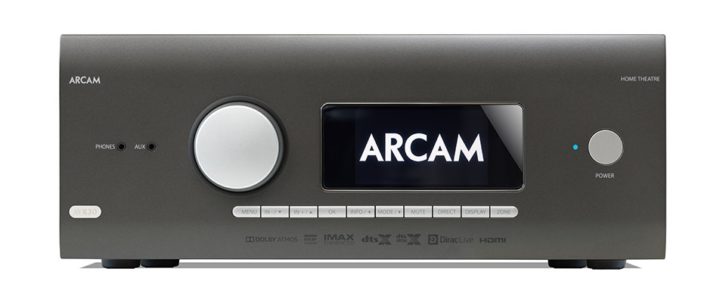
Arcam AVR30
The Arcam AVR30 is a 16-channel surround solution that features Dolby Atmos and DTS:X 9.1.6 decoding, along with IMAX Enhanced. It also has Class G power amplification, using a toroidal transformer, and full 16-channel Dirac calibration on board, as well as streaming with a mobile device using the native app of choice via Apple AirPlay 2 or Google Chromecast. It has seven HDMI inputs and three HDMI outputs, and is Enhanced Audio Return Channel (eARC) compatible.
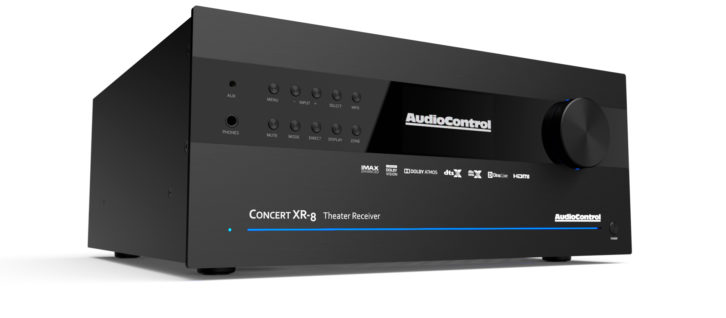
AudioControl Concert Series
AudioControl’s new Concert Series of immersive audio/video receivers is comprised of three models; the Concert XR-8, Concert XR-6, and Concert XR-4. All three models have Dirac room correction and all of the popular surround formats. The Concert XR-6 and Concert XR-8 also add Auro 3D. Enthusiasts will also appreciate having six channels of user-configurable outputs, ideal for high-pass channels, additional subwoofers or height channels — whatever the room requires to optimize the movie experience. The Concert Series AVRs feature 16-channels of output, integrated web-based configuration, app-based control, Google Cast, AirPlay 2, aptX Bluetooth, and Wi-Fi streaming connectivity.
From What HiFi?: Best AV receivers 2019: brilliant home cinema amplifiers
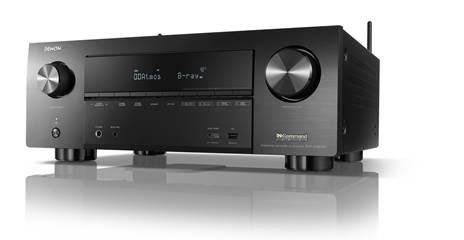
Denon AVR-X3600H
The Denon AVR-X3600H 9.2-channel AV receiver offers offers IMAX Enhanced out-of-box, as well as a full suite of three-dimensional audio formats, including Dolby Atmos, DTS:X, DTS Virtual:X, and new Dolby Atmos Height Virtualization Technology. It also supports the latest video technologies, including Dolby Vision, HDR10, HLG, and 4K Ultra HD. Additionally, the AVR-X3600H supports eARC and Auto Low Latency Mode (ALLM). For voice control, it works with Amazon Alexa, Google Assistant, Apple Siri, and Josh.ai. For the CI channel, the AVR-X3600H’s smart features include newly added Audio Select functionality, or AirPlay OFF, so it will not appear on every iOS device throughout the home. Integrators can now assign the same HDMI input source over multiple inputs and choose different audio sources. A variety of remote monitoring and management technologies, including OvrC, ihiji Invision, or Domotz Pro, are supported. Additional features include a web UI to remotely access the AVR’s setup menu, and access to All Zone Stereo Mode, a.k.a, Party Mode, via quick selects.
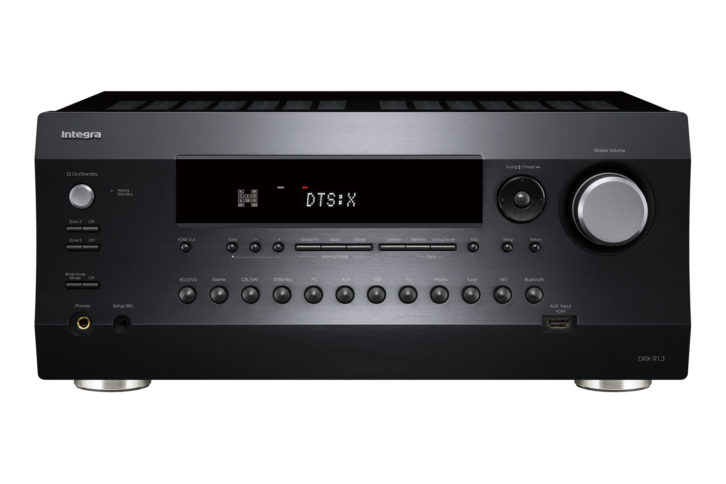
Integra DRX-R1.3
The DRX-R1.3 11.2-channel AVR from Integra is a THX Ultra-certified network receiver that provides power at 140 watts per channel (8 ohms, 20 Hz–20 kHz, 0.08% THD, 2 channels driven, FTC) and includes all the current 4K video support and multichannel audio processing, including full HDCP2.2 support. It uses copper screws to lock modular circuitry blocks to a double-skinned insulated frame, and features additional internal bracing to enhance its anti-resonant characteristics, floating circuit boards, multiple 32-bit DSPs and DACs, and a custom shielded power supply and shielded amplification, all of which harmonize to isolate signals from noise.
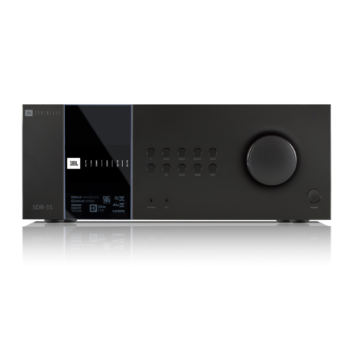
JBL Synthesis SDR-35
Harman turned many heads at this year’s CEDIA Expo with its JBL Synthesis SDR-35 16-channel AVR with a litany of features, including Dolby Atmos, DTS:X3D, and Auro 3D surround sound, plus Harman’s Logic 16, which will upmix any input source from mono up to 15.1, including all Dolby formats, with 3D sound (Dolby, DTS Neural:X, and Auro 3D upmixers are also onboard). It also includes Dante Network Audio, which means all 16 channels of processed audio, plus Zone 2, can be routed on a single Cat5e or Cat6 cable over a standard network. Under the hood is Class G amplification, a 24-bit/192 kHz ESS Sabre Pro DAC, and Dirac Live room equalization. On the video side, it can handle Dolby Vision, HLG, HDR10, HDR10+, HDMI2.0b with HDCP2.2, and 3D video. Plus it supports eARC and can utilize Chromecast and Apple AirPlay 2.
Marantz SR6014 4K Ultra HD AV Receivers
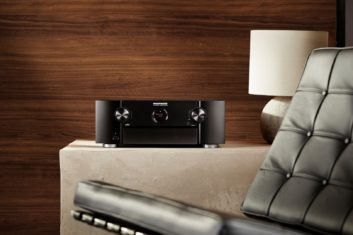 The Marantz SR6014 includes eight HDMI inputs, with one located on the front panel for quick connections. Each input supports 4K Ultra HD 60 Hz video, 4:4:4 Pure Color sub-sampling, Dolby Vision, HLG, High Dynamic Range (HDR10), 21:9 video, 3D and BT.2020 pass-through, and HDCP 2.3 copy protection standard. For surround processing, it supports IMAX Enhanced, Dolby Atmos, DTS:X, DTS Virtual:X, and Dolby Atmos Height Virtualization Technology. It also includes Audyssey MultEQ XT32 room calibration, which provides seamless room setup. With the supplied measurement microphone, MultEQ XT32 analyzes each speaker’s output (including subwoofers) at up to eight measurement locations and generates precision digital filters to optimize each channel for the correct frequency and time domain response. OvrC, ihiji Invision, and Domotz Pro are supported.
The Marantz SR6014 includes eight HDMI inputs, with one located on the front panel for quick connections. Each input supports 4K Ultra HD 60 Hz video, 4:4:4 Pure Color sub-sampling, Dolby Vision, HLG, High Dynamic Range (HDR10), 21:9 video, 3D and BT.2020 pass-through, and HDCP 2.3 copy protection standard. For surround processing, it supports IMAX Enhanced, Dolby Atmos, DTS:X, DTS Virtual:X, and Dolby Atmos Height Virtualization Technology. It also includes Audyssey MultEQ XT32 room calibration, which provides seamless room setup. With the supplied measurement microphone, MultEQ XT32 analyzes each speaker’s output (including subwoofers) at up to eight measurement locations and generates precision digital filters to optimize each channel for the correct frequency and time domain response. OvrC, ihiji Invision, and Domotz Pro are supported.
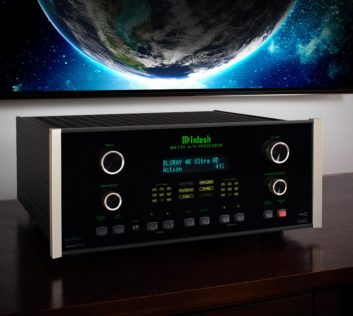
McIntosh MX170 AV Processor
The McIntosh MX170 features balanced outputs for a 15.1 surround sound speaker configuration. If you don’t have that many surround sound speakers, four of the outputs can be used to biamp some of the speakers or to drive additional subwoofers. It comes with a full suite of digital inputs, including four optical, three coaxial, and one USB that each accept up to 24-bit/192 kHz signals, plus one digital balanced input. For analog audio inputs, there are two balanced and four unbalanced inputs, a phono input, and a 7.1 multichannel unbalanced input. On the video side, the MX170 has eight HDMI inputs and four HDMI outputs. Each HDMI port is HDCP 2.2/2.3 and has 18 Gbps of bandwidth to fully support 4K Ultra HD picture quality and full 4:4:4 color spacing. Audio Return Channel (ARC) capabilities are featured on three of the outputs, while the fourth features Enhanced eARC functionality. It provides Dolby Atmos, DTS:X, and Auro-3D processing, as well as RoomPerfect room correction technology that will measure and adjust the audio output to compensate for the specific acoustic properties of the room.
Related: The State of Surround Sound
NAD T 778
The T 778 features the latest developments in NAD’s Hybrid Digital technology to create nine high-current/high-power channels of amplification with improved efficiency, according to the company. The NAD AVR conservatively delivers 9 x 100 watts FTC and 9 x 80 watts FDP, all channels driven at rated distortion. For flexibility, the amp channels are configurable to be used for surround or second zone audio. A low-profile 3U rack-mount chassis and TFT touch display combine with certified driver support for all major control systems to make the T 778 a solid choice for custom home theaters. It supports 7.1.4 Dolby Atmos and DTS Master Audio, and offers Dirac Live room correction. It also incorporates high res multi-room streaming via BluOS.
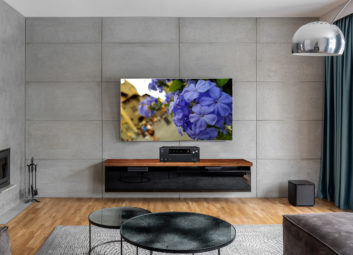
Onkyo TX-NR797
The IMAX Enhanced-compatible TX-NR797 also plays Dolby Atmos and DTS:X formats through 5.2.2 channels and adds another pair of heights (5.2.4) or rear surrounds (7.2.2) for deeper immersion. It includes Dolby Surround and DTS Neural:X upmixers for legacy audio formats, and features Dolby Atmos Height Virtualizer. The TX-NR797 produces 220 watts (6 ohms, 1 kHz, 10% THD, 1-ch driven) and benefits from new anti-noise measures, including a refined HDMI board, isolated network board, and strengthened power-supply line. It has a quad-core SoC (System on a Chip), which enables high-speed 802.11ac 2×2 MIMO Wi-Fi and evolved network functionalities. The receiver supports 384 kHz/32-bit multichannel D/A conversion optimized by VLSC (Vector Linear Shaping Circuitry) pulse-noise-removal technology on the front L/R channels. For hi-res audio, DSD is supported to 11.2 MHz and FLAC, WAV [RIFF], AIFF, and ALAC to 192 kHz/24-bit.
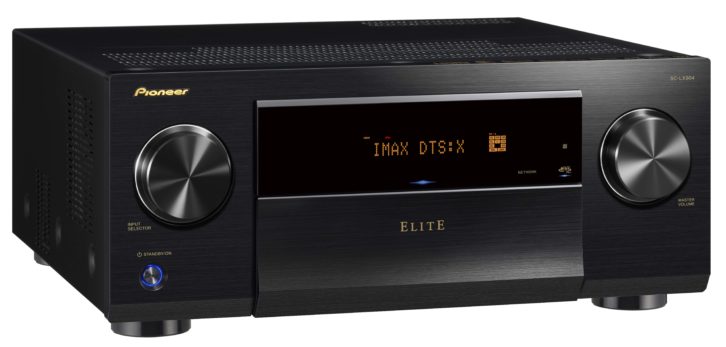
Pioneer Elite SC-LX904
The Pioneer Elite SC-LX904 has the latest version of Direct Energy HD Amplifier, a Class D amplifier that supports simultaneous multichannel amplification with 140 watts x 11 channels (LX904). The SC-LX904 uses ESS9026 384 kHz/32-bit high-quality DACs to equalize all channel signal processing from the beginning. It reproduces Dolby Atmos, DTS:X, and IMAX Enhanced. Upon setup, the company’s MCACC (Multi-Channel Acoustic Calibration System) PRO creates the ideal acoustic environment via the receiver’s custom microphone. The system automatically compensates for differences in speaker size, level and distance, and equalizes the response. The LX904 features seven HDMI ins, three HDMI outs, and supports Ultra HD pass-through with HDCP 2.3, 4K / 60 Hz, Dolby Vision, HDR10, HLG, WCG, and Ultra HD upscaling (1080p to 4K). When connected to a Pioneer Universal Disc Player like the UDP-LX800 or UDP-LX500 via HDMI, the SC-LX904 minimizes the adverse effect of jitter in the HDMI transmission and enables accurate D/A conversion.
Sony STR-ZA5000ES
The Sony STR-ZA5000ES provides 9.2 channels of surround sound — including two overhead speakers — with 130 watts of power per channel, and can accept up to two active subwoofers for even bass distribution around the room. It has six HDMI inputs and two HDMI outputs, as well as an eight-port Ethernet switch that connects to computers, servers, or media boxes. Two of the ports support Power over Ethernet. It is web browser configurable, allowing you to view, program, and edit the receiver settings from a computer, smartphone, or tablet, and offers remote monitoring with ihiji. It uses DCAC EX for auto-calibration, which uses a stereo mic to measure speaker positioning down to the nearest centimeter, before automatically adjusting frequencies, phase, and delays for better sound positioning. It then tunes the speakers using a 31-band EQ.
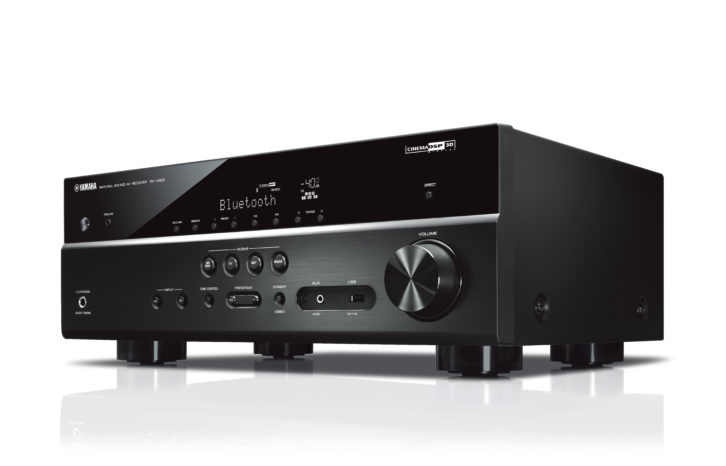
Yamaha RX-V 85 Series 4K AV Receivers
All three receivers in the RX-V 85 line — the 5.1-channel RX-V485 and 7.2-channel RX-V585 and RX-V685 — deliver up to 4K resolution at 60 frames per second. The receivers also pass through high dynamic range (HDR) video in the HDR 10, Dolby Vision, and Hybrid Log-Gamma formats with BT.2020 wide color gamut (WCG) compatibility. The RX-V685 offers dual HDMI outputs for rooms incorporating both a flat-screen TV and a video projector. All three models support HD Audio decoding of Dolby TrueHD and DTS-HD Master Audio soundtracks, while the RX-V585 and RX-V685 also support object-based Dolby Atmos and DTS:X decoding. All feature Yamaha-exclusive sound technologies, such as YPAO auto-calibration and Cinema DSP, which transforms the dynamics of the listening environment to re-create the acoustic experience of being in a movie theater or even music venues such as the Bottom Line, Roxy Theater, or European cathedrals.


